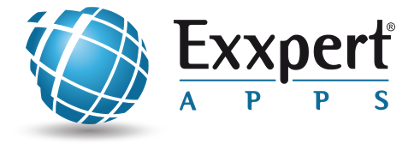Success in the Digital Economy
Avoiding Project Pitfalls in the Digital Age
|
_TÍTULO_, “Approximately one-third of all projects don’t meet the expected goals” as indicated in the recent report “Pulse of the Profession” published by the Project Management Institute in 2015. The common pitfalls are well known and still this number has not changed over the last years. This blog post describes how a combination of best practices and technology of the Digital Age can contribute improving project results over time avoiding the common pitfalls. Best wishes and regards, |
|
Projects should align with the corporate strategyIf you ask 10 employees which is the strategy of your company, would they all have the same one-sentence-answer? As published by Harvard Business Review in 2005, “on average, 95% of a company’s employees are unaware of, or do not understand, its strategy”. The small effort or properly writing and communicating a company's strategy to all employees on a regular basis generates positive results because it focuses everybody’s work into one common direction. Unfortunately, few companies do it and this is why company projects often misuse resources implementing projects that don’t really contribute to the core business. |
|
Project Goals should "touch" everybody
Incredibly enough, even large projects where millions of Euros (or USD) are spent have unclear goals. Very often, the company’s top management expects quite different results than the project team is working on. This situation generates bad results by design. Nobody can be happy after completing such a project. According to Dr. Gail Matthews at Dominican University, the chances of achieving goals is higher when those goals are written. Best results are achieved when project goals a written, communicated and accepted by the management as well as the team. Many years ago IBM Germany challenged IBM Japan to compete on the business results of a certain year. The goal was written, the management team signed it and it was published as posters all across the buildings. |
|
Project responsibilities should avoid "black holes" © Photographer: Daisyeung | Agency: Dreamstime.com Think of your project outcome as a great picture made of individual tiles.
|
|
Project data structure should be defined upfront © Photographer: Mezzotintdreamstime | Agency: Dreamstime.com
Think of your project as a generator of digital assets that need to be created and consumed to produce results. Defining upfront all the documentation, the generator, the receiver and the corresponding structure will increase the productivity and generate better results. In the Digital Economy where information is the basis for input and output of tasks and projects we see that project teams leave it to the individual persons to determine the structure of the information generated and exchanged. The big problem here is that the information “generator” and the information “receptor” have different expectations on the structure of the exchanged information. As a result, thousands of working hours are spent just to adapt information so that the “next-in-line” can use it properly. As it was published by CNN in 1999 “NASA lost a $125 million Mars orbiter because a Lockheed Martin engineering team used English units of measurement while the agency's team used the more conventional metric system for a key spacecraft operation, according to a review finding released Thursday.” |
|
Project experience is "wind for sailing"
As said by Richard Branson, “There are few things more valuable to an entrepreneur than being able to call upon experience to make decisions.” How can we become better if we don’t use the internal (and even external) experience of the past? Repetitive projects (like building many houses during the year) make it easier to reuse the experience since the project teams do it over and over again. But many large company projects are done only once (like replacing the core business application) and therefore it is impossible to have internal experience. In those cases, do we obtain external experience?
|
|
Technology can contribute to avoid these project pitfallsIn today’s Digital Economy we have access to software tools that can help us to avoid all all of the mentioned project pitfalls. Are you using these tools?
We at Calvi Systems provide customers around the world the necessary technology to improve their project success. Our enterprise application ExxpertApps is the infrastructure for the Digital Economy and is being used to manage projects, communicate internally and externally and save & reuse experience to improve business processes. In case you would like to use all these technology elements to improve your project results, feel free to contact us at info@calvisystems.com
|
|
|
 Best wishes and regards, Best wishes and regards,
Osvaldo Ostermann |
|
|
Related Articles about "Success in the Digital Economy" |
|
| Calvi Systems is a software and consultancy company. We help customers achieve competitive advantage in the Digital Economy through a Next Generation Enterprise Application (ExxpertApps) and consultancy services. | |
| Copyright © 2016 Calvi Systems SL, All rights reserved. You are receiving this email as a contact of Osvaldo Ostermann. |






Leave a Comment